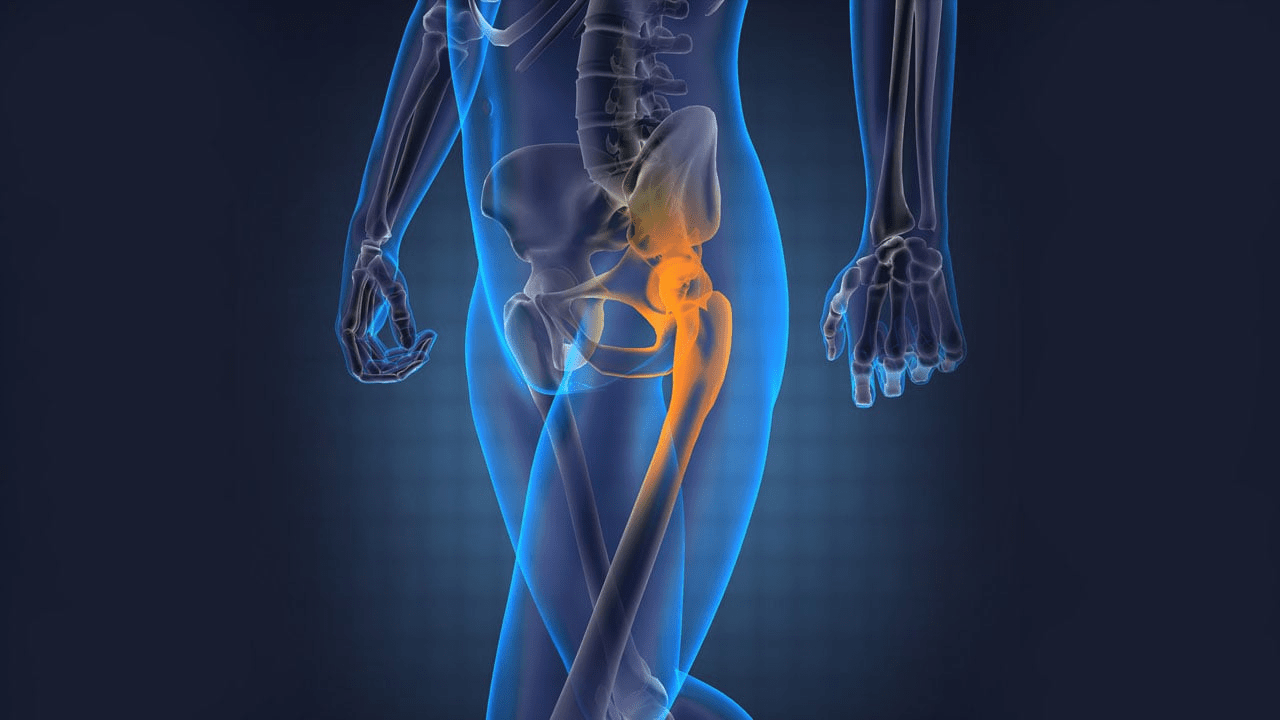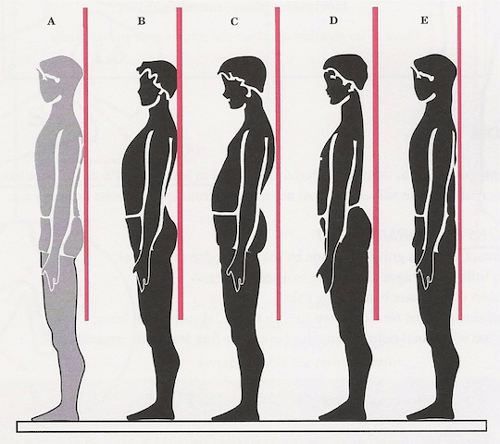Stack your hip over your ankle to slow the wear and tear of your hip

Osteoarthritis (OA) affects almost 1 in 5 Australians, mostly in the 45-65 year old age group. People living with OA have more difficulty and take longer in performing activities of daily living. They have less time available for leisure activities, depend significantly more on family for assistance and spend more money on health care than age matched and sex matched peers.
Knees and hips are the joints mostly responsible for these lifestyle limitations and changes. And surprisingly, there are many modifiable factors to suffering from OA. These can include obesity, prior injury, joint mis-alignment, poor posture, inactivity, weakness and occupational activities. All can contribute to both the onset and progression of OA-related disability.
The hip
As a physio interested in the pelvis region and also a runner and sports advocate, I am particularly interested in the hip joint. The hip joint is housed within the pelvis. This means that our postures around this region have a deep relationship and impact on the alignment and weight bearing ability of the hip. Here are some cool facts about the hip:
- Did you know? The hip is a ball and socket joint and that within the socket, the bone is more dense and strong right in the middle of this socket, whilst it is weakest at the front. This makes the ideal place to bear weight through the hip with the joint positioned middle, not towards the front.
- OA of the hip is the erosion of the cartilage and associated pain and joint changes. This usually will occur in the front of the hip socket where the bone is less dense. No surprises there!
- The alignment of the socket will be determined directly by the tilt of your pelvis. Think of your 'bowl of water' for a pelvis. Tip your bowl forward in your postures and your hip joint will effectively slip forward in the socket (not good as this has your hip sitting in the weaker bony front part of the socket!). Tilt your bowl backwards always in a slump and again, the hip joint will be aligned poorly.
- The muscle support and more importantly the balance of this support is critical for holding the ball of your hip in its socket in the ideal place. Too much strength at the front of the hip and not enough to match through the back of the hip, and you can strike troubles. This is such a common occurrence in the increasingly sedentary and seated adult. Here, butt muscles waste away, and in turn we over use and need our big thighs and front hip muscles. This creates the imbalance, again pulling our hip into the front of the socket and not the middle. More load at the weakest part of the bony hip structure.
'Hip- ankle plumbline': a great start and wonderful relief for your hip

As the hip and its alignment is critical to bear weight in the strongest part of the socket, a simple postural mindfulness in this region will delay wear and tear. Check out these common standing postures above - which one are you? We should all be aiming to look like Mr or Mrs 'A.'
Here are some tips for standing well and balancing the load into the middle of the hip socket:
- stand side on to a mirror and place your hip bone directly over your ankle bone, not in front ( common sway backed postural strategy) or behind.
- look to the pelvic bowl, your postural foundation. Hold it level, not tipped forward ( butt out) or backward (butt under).
- feel that you are not 'hanging' out on the front of your hip region.
- sense a balanced weight across your feet from front to heel.
- feel that your waists are gently lengthened on top of this pelvic and hip posture.
Voila!
Simple 'plumb-line stacking' of your hip over the ankle whenever you are standing will protect your hip joint. It will awaken muscles in the back of your hip and not leave you hanging with all the hip weight at the front of the weakest and most vulnerable part of the hip.
Fancy that! And all without a squat or lunge in sight!